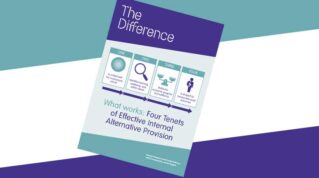“Elite” sixth forms teach few poorer pupils and recruit heavily from neighbouring areas, according to new analysis that challenges ministers’ levelling-up promises.
The government said new 16-to-19 free schools focused on getting pupils into top universities would “transform education” in left-behind areas with “weak” outcomes.
But campaigners say they will instead lead to “selection for a lucky few and rejection for the majority” after a new study found similarities among their intakes with grammar schools.
Elite sixth forms mean local pupils turned away, and more pupils travelling further to school
Dave Thomson, author of the Education Datalab study, said super-selective sixth forms “may well prove popular, but they are hardly likely to recruit many disadvantaged students unless entry requirements are relaxed”.
The analysis, shared exclusively with Schools Week, looked at the characteristics of the five per cent of sixth forms with the highest-attaining year 12 pupils, based on their GCSE results.
It found just six per cent of pupils attending the most selective sixth forms outside London were disadvantaged, compared to a national average of 17 per cent of all year 12 pupils.
Meanwhile, just 60 per cent of students at such schools lived in the same local authority area, compared to 82 per cent across all sixth forms.
‘Selection for a lucky few’
Campaigners have drawn comparisons with grammar schools, which select at 11 and are often criticised for their impact on surrounding schools. They usually have lower rates of disadvantage than the areas they serve.
Joanne Bartley, from Comprehensive Future, said education secretary Nadhim Zahawi had “billed himself as the ‘evidence-led’ education secretary…but we don’t see any evidence that grammar school-style sixth forms will work”.

Selection at any age would “benefit wealthier families and deny opportunity to disadvantaged pupils”, and “mean selection for a lucky few and rejection for the majority.
“Elite sixth forms mean local pupils turned away, and more pupils travelling further to school,” she added.
Bill Watkin, chief executive of the Sixth Form Colleges Association, said the findings showed such sixth forms “may not make a huge contribution to the levelling-up agenda”.
He added they “tend to be small and narrowly focused on specific subjects”, and are “unlikely to represent a solution for more than a tiny number of students”.
Disadvantaged students are already under-represented in school sixth forms compared to the national rate, because they are “less likely to meet the entry criteria”, said Thomson.
“Adding super-selective entry criteria for sixth forms would just create another barrier for this group.”
Elite sixth forms send more pupils to university
Highly selective sixth forms are not without their benefits, however, with pupils more likely to go to university.
Separate analysis by SchoolDash found that in areas where over one-third of pupils attended elite sixth forms, over half went on to university. In places where fewer than one in ten attended top institutions, around one-third went on to higher education.
However, areas with high numbers of top sixth-formers were also more likely to be in more affluent urban areas, which may contribute to differences in destinations data.
SchoolDash identified 438 “elite” sixth forms, including 163 grammar schools and other sixth forms with high attainment scores among pupils. These make up 18 per cent of mainstream sixth forms in England.
But coverage of these institutions varies between regions. In London, 18.6 per cent of students attend such institutions, compared to 8.4 per cent in the West Midlands and 10.3 per cent in the north west.
This also varies even more at local authority level. In some boroughs, the majority of sixth formers attend elite institutions, while in others, none do.
Last week, leaders of existing highly selective schools warned the new institutions must not become “cuckoos in the nest”.
Bartley called for an impact assessment “on whether elite sixth forms damage surrounding local schools. This government seems to have an obsession with ‘elite’ schooling, while all the evidence suggests the pupils in this high-attaining group tend to do well wherever they are educated.”
Watkin added: “It is sometimes a good thing to introduce a disruption to the system, but only when this leads to a constructive and positive outcome.”
The DfE was approached for comment.
















Your thoughts